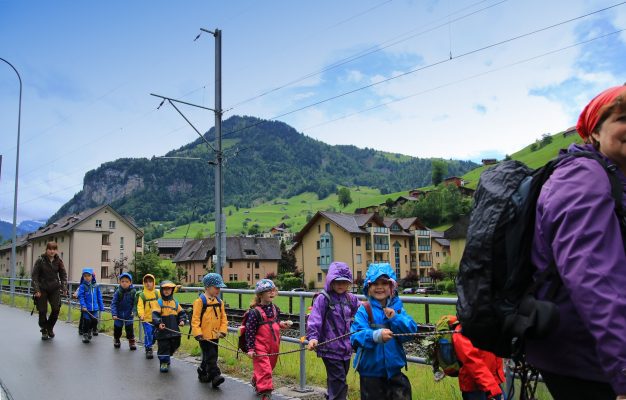
Planning and designing child-friendly living spaces – lessons from Switzerland
A series of important ‘child-friendly living spaces’ resources aimed at professionals, produced by UNICEF Switzerland and Liechtenstein, are now available in English.
Organisers say that the manual, Planning and Designing child-friendly living spaces, along with the accompanying website and various best practice case studies are all now available in English.
Nadine Junghanns, from Child Rights Advocacy at UNICEF Switzerland said that now was the perfect time to spread the key messages set out in the manual, so that they can be utilised by key people relevant to the issues being highlighted.
You can download the English materials through these links:
- Download manual (free): https://www.unicef.ch/en/media/1500/download
- Child-friendly living spaces website: https://www.unicef.ch/en/child-friendly-lving-spaces
- Best practice case studies: https://www.unicef.ch/en/case-studies-child-friendy-living-spaces
UNICEF Switzerland and Liechtenstein says ‘for years it has been committed to implementing the child-friendly communities initiative, and the child-friendly living spaces department for child-friendly community and development’. The translation then of some its latest key publications into English is a major step forward for widening the messages to an international community.
Introducing the manual, Bettina Junker, CEO of UNICEF Switzerland and Liechtenstein, says that children ‘are part of our society and make very special demands of their living spaces’. “For them, space is orientation, time, experience, education, victory, fear, pride and courage in one,” she adds.
“Children develop by independently discovering their living spaces and gradually expanding them. Under normal circumstances, they weave a network of locations in their everyday lives, and being on the move in and between these various living spaces makes children independent, confident and responsible.”
The manual sets out the basic principles, definitions and criteria of child-friendly living spaces, as well as examining the inevitable politics involved. Also covered are design and architecture, education, child protection, and the wider societal implications
And Junker goes on to acknowledge that in spite of all these unique characteristics demonstrated by the younger children, it is often a significant challenge for adults to understand what is being said to them. She goes on: “Adults do not always have a good grasp of the immense importance of space for children and young people. We often do not have the tools in our everyday lives to design living spaces for children. This is where this handbook comes in. It sets out the challenges for adult key persons and helps to carry the responsibility and obligations anchored in the United Nations Convention on the Rights of the Child.”
She adds that child-friendly living spaces ‘are not just living spaces for small people’.
“They are living spaces for everyone, since the things that are important for children also benefit other generations. A child’s perspective often brings to light issues that adults do not recognise as such. More green spaces and more recreation and relaxation areas also give adults space to breathe. If we tackle the challenges facing children and young people posed by densification, over-protection and urbanisation, for example, then we will be taking an amazing opportunity to create more attractive spaces for everyone.
“We encourage everyone to take this responsibility and so to create more value for everyone – this handbook will show you how,” she concluded.
Examples of case studies highlighted include temporary 30km/h zones in Basel; children’s involvement in constructing outdoor spaces at a school in Bern; political guidelines for promoting children and young people in Baden. and a safe school route in Allschwil.
You can also buy a hard copy of the manual, cost is CHF 36 – click here.




